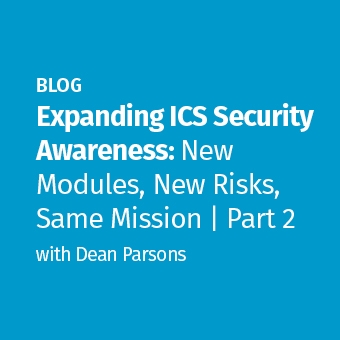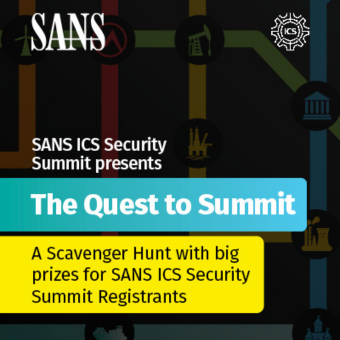
This is a continuation of Chris Sistrunk’s previous blog post which may be found here.
Potential Attack Vectors
I suppose this is why you came here: to learn what an attacker could do if they had digital access to a Transmission or Distribution substation. We will assume that the attacker has physical access to a substation or has compromised the substation network via the electric utility’s SCADA DMZ. Transmission and Distribution SCADA systems may or may not be separated physically or logically depending on the utility.
The end goal of an attacker could be to:
- gain knowledge about the substation network
- use the substation devices to pivot to another area of the electric grid network
- spoof SCADA data going to the control center
- cause a denial of service to substation or SCADA components
- send controls to substation equipment
- or in the worst case, destroy substation equipment
I must say that once an attacker has physical access to a substation, all bets are off as they can operate breakers or cause physical damage to equipment.
For illustrative purposes, what could an attacker do purely with a digital attack inside a transmission substation? First, any exposed serial, USB, and Ethernet ports will be enticing as well as any unencrypted radio communications. Transmission substations are regulated by NERC/CIP, which has caused utilities in North America to add many security features and protections against attacks. The attacker may have a hard time finding an access point on the network. These major bulk transmission stations are required to have unused ports disabled or locked down, use difficult passwords or multifactor authentication, have no flat networks, and use firewalls. But, the more complex the substation network, the higher the likelihood of a configuration error would be made.
An attacker may only need one vulnerable system to get access to the transmission substation network. Even though they are supposed to be, substation Intelligent Electronic Devices (IEDs) and network devices may not be patched to the absolute latest release. If an attacker has no luck finding an available network port, they may unplug a device and put a hub inline to sniff traffic. At this point the attacker would most likely be able to see the ICS protocols which most likely will be unencrypted and unauthenticated. These insecure ICS protocols would allow the attacker to spoof, modify, or replay the traffic at their will. Even if an attack on one transmission substation was successful, transmission grids are required by NERC to be designed to withstand the “next credible contingency.” After the August 2003 blackout, NERC increased and enforces reliability standards for the bulk electric system.
On the other hand, if an attacker had physical access to a distribution substation, it would be easier to go undetected since these substations are not as important to the overall bulk electric system as transmission substations. Since these substations are not subject to NERC/CIP compliance, they may not be patched, have default passwords, and open ports on an Ethernet switch. If a breaker was tripped or even destroyed, the outage would be a local one (and perhaps temporary as well). These types of outages happen all the time and very rarely affect the bulk transmission grid. But if an attacker can pivot from the substation to a SCADA Front End Processor (FEP) or to the Distribution SCADA Master itself, then the impact is greater.
Lastly, if an attacker had access to the substation network from inside the power company SCADA WAN, this would be a very serious issue. This is the scenario that power companies do not want to occur and they even plan for these types of incidents. An attacker that has compromised valid credentials could pivot through the SCADA DMZ to access the heart of the SCADA master or even the entire EMS (like Mr. Santamarta showed). Many companies are using two-factor authentication to access SCADA DMZs and also the SCADA master systems, which are problematic to bypass. Also an attacker could come in through trusted third party connections such as neighboring electric utilities and also their Regional Transmission Organization (RTO). SCADA masters in a control center are deemed critical for obvious reasons and there are considerable digital protections around these systems. If these systems were defeated, an attacker with the proper knowledge may be able to compromise the system. Due to the possibilities of a breach being inevitable, utilities are beginning to implement network security monitoring on their systems.
Examples in the Real-World
Several digital attacks on the electric grid have been demonstrated by researchers. The Aurora generator test at Idaho National Labs in 2007 was an example of what an attacker could do if they had remote access to protective relays with the proper credentials. They could change the relay settings, such as adding malicious logic that will close a breaker at the wrong synchronization to mechanically destroy the generator. Attackers could also do this to any transmission and distribution breaker. Fortunately, power grid operators acted quickly to review their relay configurations and removed remote access to important relays and added additional synchronization checks.
In 2013, Adam Crain and I discovered numerous DNP3 protocol implementation vulnerabilities in many different vendors’ products as part of Project Robus. The fuzzer that we created was based on the DNP3 protocol specification and included the server side (like other DNP3 fuzzers), but it also tested the client side of the protocol on Ethernet and serial connections. SCADA masters had not really been tested in this way before. We theorized and then proved that it could be possible to send malicious or malformed unsolicited response DNP3 messages that would crash or hang the SCADA master software. We did not write any exploits for the bugs we discovered and we worked hard to help get them fixed. However, there are numerous publicly available exploits that target software and IEDs used in substations around the world, not counting vulnerabilities in Windows or Linux operating systems, or network components.
Conclusion
There are several ways that a criminal could attack a transmission or distribution substation that could have effects on the reliability and efficiency of the local power grid. However, an attack intended to have far-reaching effects from a single substation isn’t likely due to reliability required by NERC, designed by dedicated engineers, and maintained and restored by operators and crews around the clock. NERC/CIP does a good job of requiring utilities to get basic cybersecurity right with multiple layers of protection to help prevent attacks on substation and SCADA networks. But, we know that compliance doesn’t equal security, and would-be attackers don’t have to comply with NERC/CIP. For now, we are thankful that criminals enjoy electricity just as much as we do.
Further Reading on Substations
I always like to include some references in my blogs in case someone may be interested in learning more about the topic. Here are some great books about substations, substation cybersecurity, and protective relaying.
My friend and colleague, John McDonald, put together an entire book devoted to substation engineering called Electric Power Substations Engineering and it is now up to the 3rd edition. This book covers everything about substations from the planning of a substation, to all substation equipment types, to physical and cybersecurity!
The First edition of the Standard Handbook for Electrical Engineers was published in 1907. I have a copy of the 5th edition from 1922, which includes so much history about electrical engineering at that time... including transmission, distribution, and generation. The 16th edition was published in 2012 and Section 17 is a chapter devoted to substations.
Two great books about protective relaying are The Art and Science of Protective Relaying by C. Russell Mason (which is now in pdf format for free thanks to GE) and Protective Relaying: Principles and Applications, 4th edition by J. Lewis Blackburn.
Bio: Chris Sistrunk is a Senior Consultant at Mandiant, focusing on cybersecurity for ICS and critical infrastructure. Prior to joining Mandiant, he was a Senior Engineer at Entergy (over 11 years) where he was the Subject Matter Expert (SME) for Transmission & Distribution SCADA systems. He helped organize the first ICS Village, which debuted at DEF CON 22. He is a Senior Member of IEEE, member of the DNP Users Group, President of Mississippi Infragard, and also is a registered PE in Louisiana. He holds a BS in Electrical Engineering and MS in Engineering and Technology Management from Louisiana Tech University. Chris also founded and organizes BSidesJackson, Mississippi’s only cyber security conference.




